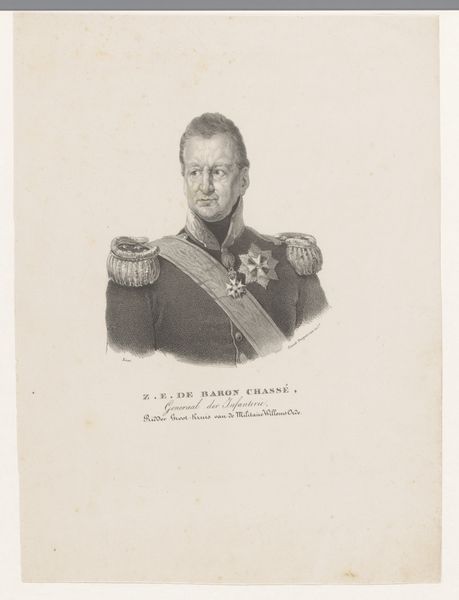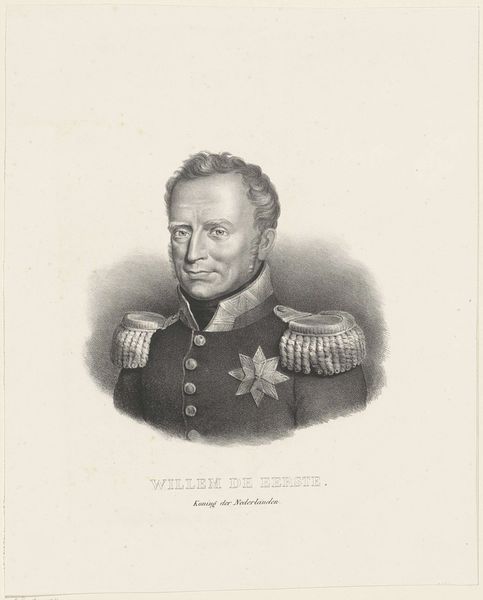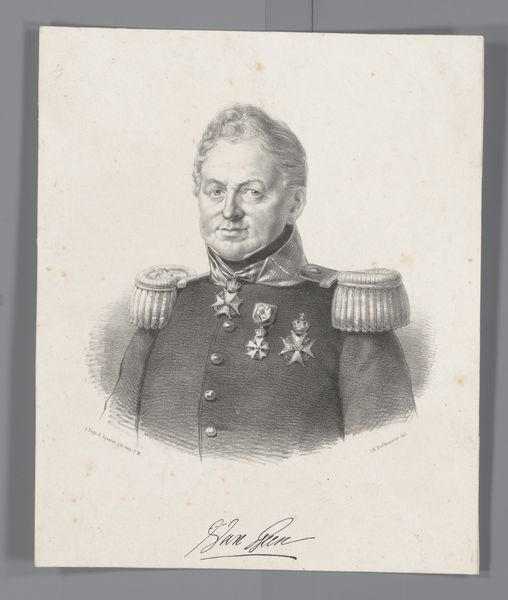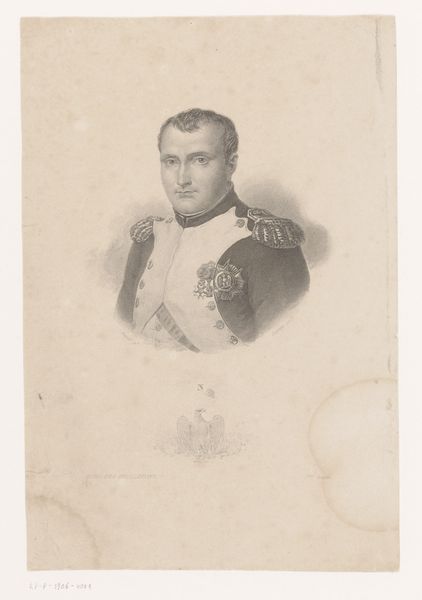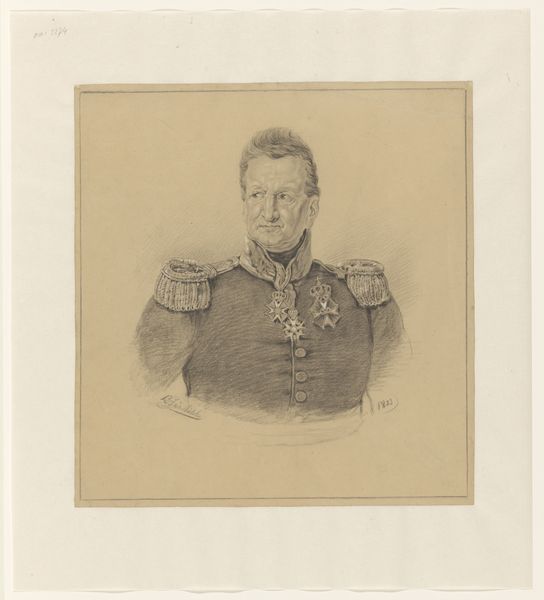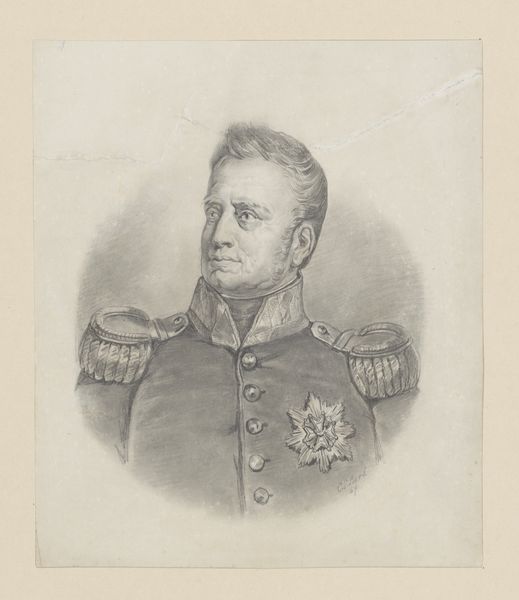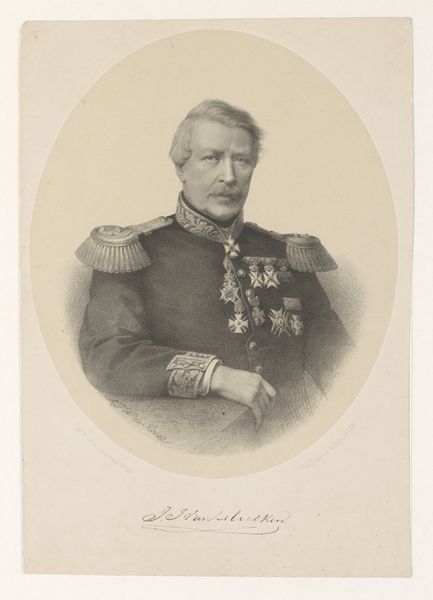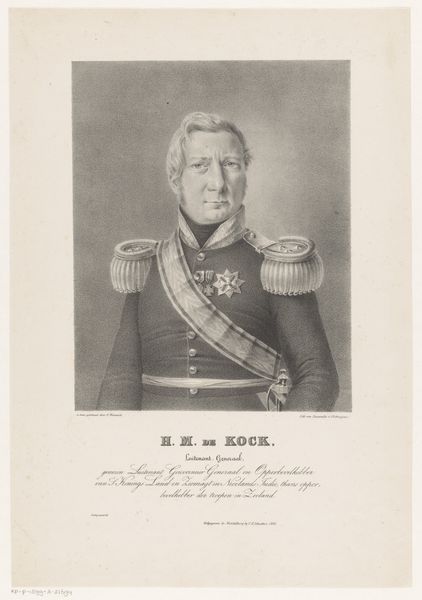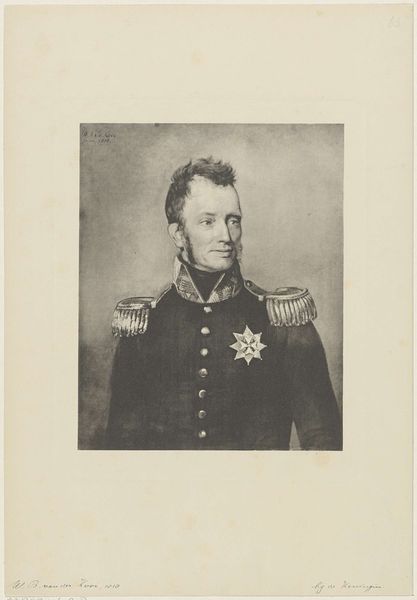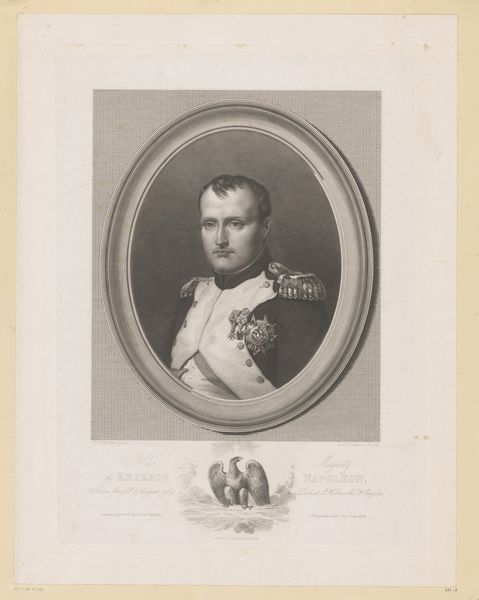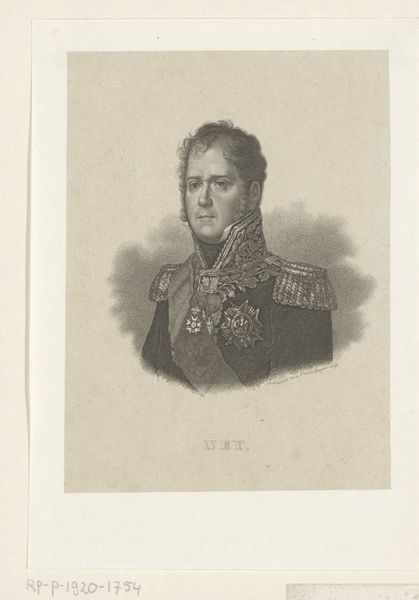
drawing, pencil
#
portrait
#
pencil drawn
#
drawing
#
caricature
#
pencil drawing
#
pencil
#
portrait drawing
#
academic-art
Dimensions: height 280 mm, width 230 mm
Copyright: Rijks Museum: Open Domain
Curator: This is a pencil drawing titled "Portret van David Hendrik Chassé" by Johan Hendrik Hoffmeister, dating approximately from 1851 to 1883. What’s your initial reaction? Editor: My immediate impression is a feeling of authority. The sharp lines and meticulously rendered uniform project power and status. There's an intensity to his gaze, but also perhaps a hint of weariness in the lines etched around his eyes. Curator: Absolutely. Let's situate this portrait within its historical moment. David Hendrik Chassé was a prominent Dutch general, celebrated for his role in the Battle of Waterloo. Hoffmeister created this drawing years after Chassé's military career had solidified his position within the Dutch aristocracy. How might we interpret this work through a social lens, understanding its significance at that specific moment in time? Editor: We have to consider the power dynamics at play. A portrait, especially one like this intended for public consumption, becomes an instrument of social affirmation. The subject, already a figure of importance, has that elevated status amplified. The details within the military uniform with its ornamentation signify both the General's career success and the artist's rendering celebrates this structure. Curator: Considering academic art practices, portraiture played a vital role in solidifying social hierarchies. This drawing is not simply an image of an individual; it symbolizes broader socio-political themes of duty, honor, and national identity, doesn’t it? I see it speaking to nineteenth-century societal values, and perhaps also a reinforcement of the existing patriarchal structure through the veneration of military figures. Editor: Precisely. And we can't ignore the subtle commentary the artist might be making through his technique. Although the artist employs realism through careful drawing skills, we should also remember that it can be interpreted as glorifying war, or perhaps memorializing an individual who helped form and maintain that structure. It leaves a question about whose perspectives and power gets immortalized by official portraiture. Curator: That's a great point. Ultimately, the portrait functions as both a representation of a man and a statement about the values of a specific historical period. It asks us to reflect on who is deemed worthy of remembrance and how artistic representations shape our understanding of history. Editor: It's an intriguing look into how artistic choices reinforce or subtly question accepted views. I think it invites us to actively analyze what stories visual representation are chosen to convey power.
Comments
No comments
Be the first to comment and join the conversation on the ultimate creative platform.
